bioadvanced brush killer mixing instructions
BioAdvanced Brush Killer is a potent herbicide designed to eliminate tough brush, vines, and stumps. Proper mixing ensures effectiveness and safety, making it essential to follow label guidelines carefully.
Overview of BioAdvanced Brush Killer
BioAdvanced Brush Killer is a concentrated herbicide designed to control tough brush, vines, and stumps. It contains 8.8% Triclopyr, a potent active ingredient that targets unwanted vegetation effectively. This product is popular for its ability to penetrate deep into plant tissues, ensuring thorough elimination. It is versatile, suitable for use during spring, summer, and fall, making it a reliable solution for seasonal weed management. The formula is particularly effective against invasive species like kudzu, offering long-lasting results. Users appreciate its concentrated form, which allows for customizable mixing based on the severity of the infestation. While it is highly effective, proper application and adherence to label instructions are crucial to ensure safety and environmental protection. BioAdvanced Brush Killer is a go-to option for homeowners and gardeners seeking a powerful solution for managing stubborn brush and vines.
Importance of Proper Mixing Instructions

Proper mixing of BioAdvanced Brush Killer is crucial for effective and safe application. Incorrect dilution can lead to reduced efficacy or potential environmental harm. Following the recommended mix ratio ensures the herbicide is applied at the right concentration to target tough brush and vines effectively. Over-application can exceed Maximum Application Rates, posing risks to non-target plants and ecosystems. Conversely, under-application may fail to control invasive species adequately. Adhering to the instructions ensures the product performs as intended, providing long-lasting control without unnecessary environmental impact. Proper mixing also prevents exposure risks, emphasizing the need for protective gear. By following label guidelines, users can achieve optimal results while safeguarding their surroundings. Diluting correctly balances efficacy and safety, making it essential for successful weed management. Accurate mixing is thus vital for both effectiveness and responsible use of the product.
Mixing Ratios and Guidelines
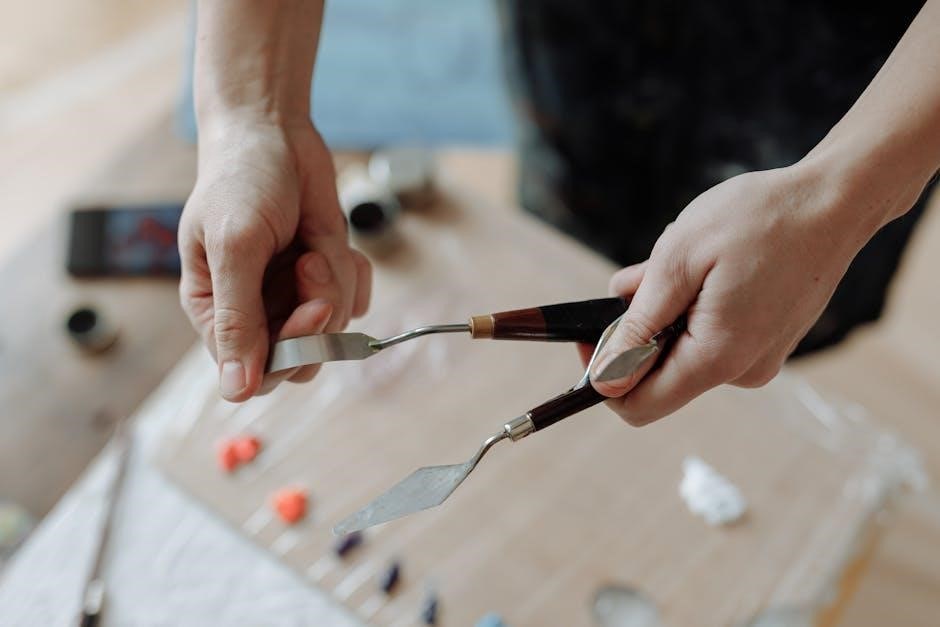
For optimal results, mix 4 fl. oz. of BioAdvanced Brush Killer with 1 gallon of water to treat up to 500 square feet. Avoid exceeding 9 lb ae/A Triclopyr annually.
General Mixing Instructions
To ensure effective and safe use of BioAdvanced Brush Killer, start by adding the concentrate to water in a sprayer tank. Mix 4 fl. oz. of the product with 1 gallon of water to cover up to 500 square feet. Always agitate the mixture thoroughly to maintain the solution’s uniformity. For stumps, apply the concentrate at full strength without dilution, ensuring the entire surface is thoroughly wet but not dripping. It’s crucial to follow the label instructions precisely to avoid over-application and potential environmental harm. Regular agitation every 5-10 minutes during application helps maintain the mixture’s potency. Optional additives like surfactants (1/4 tsp per gallon) can enhance penetration. Proper mixing ensures the product performs effectively while minimizing risks to people and the environment. Always refer to the product label for detailed guidance.
Recommended Dilution Ratios
The recommended dilution ratio for BioAdvanced Brush Killer varies based on the target vegetation. For general brush control, mix 4 fl. oz. of the concentrate with 1 gallon of water. This solution effectively treats up to 500 square feet of area. For tougher vegetation or stumps, the product can be applied at full strength without dilution. Always ensure the mixture is well-agitated before and during application to maintain consistency. It’s important to not exceed the maximum annual application rate of 9 lb ae/A Triclopyr (17 fl. oz. of Brush Killer per 500 square feet). Adhering to these ratios ensures optimal effectiveness while minimizing environmental impact. Proper dilution is critical for achieving desired results and safety.
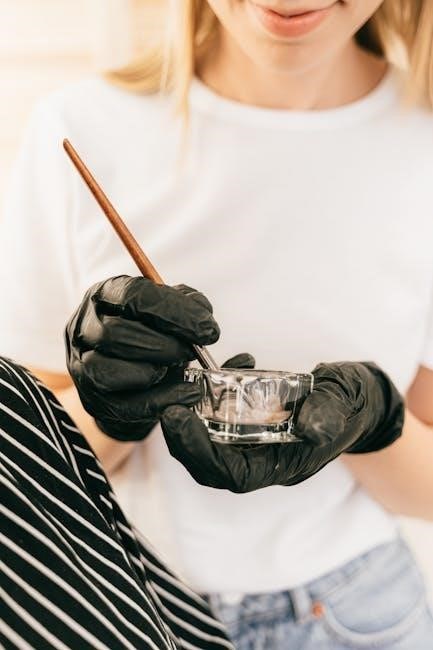
Specific Mixtures for Brush, Stumps, and Vines
For general brush and vine control, mix 4 fl. oz. of BioAdvanced Brush Killer concentrate with 1 gallon of water. This solution treats up to 500 square feet effectively. For stumps, apply the concentrate at full strength without dilution to ensure deep penetration and thorough kill. Vines may also be treated with the standard 4 fl. oz. per gallon mixture, but ensure thorough coverage for optimal results. Adjustments may be needed for larger areas or denser growth. Always follow the maximum annual application rate of 9 lb ae/A Triclopyr (17 fl. oz. per 500 square feet) to avoid over-application. These specific mixtures are designed to target different types of vegetation effectively while maintaining safety and efficacy.
Maximum Application Rates
The maximum annual application rate for BioAdvanced Brush Killer is 9 lb ae/A (acid equivalent per acre) of Triclopyr, which equates to 17 fl. oz. of the concentrate per 500 square feet. This ensures safe and effective control without over-application. Exceeding this rate can lead to environmental concerns and reduced efficacy. For stumps, the concentrate is applied at full strength (undiluted) directly to the cut surface. Vines and brush should not exceed the standard mixture of 4 fl. oz. per gallon of water. Adhering to these guidelines helps maintain product performance while minimizing potential risks. Always refer to the product label for precise application rates tailored to your specific needs and target vegetation.
Adjusting Mixtures for Different Areas
When using BioAdvanced Brush Killer, adjust the mixture based on the target area and vegetation type. For stumps, apply the concentrate at full strength (undiluted) directly to the cut surface. For brush and vines, the standard mixture of 4 fl. oz. of concentrate per gallon of water is effective. In larger areas or for dense vegetation, maintain the same ratio but scale up the quantity accordingly. Avoid exceeding the recommended concentration, as this can reduce effectiveness or cause environmental harm. For smaller, isolated plants, a finer spray nozzle can help target the area precisely; Always ensure the solution is well-mixed before application. Adjusting the mixture correctly ensures optimal results while minimizing waste and potential overspray. Adhere to the product label for specific guidance tailored to your application scenario.

Application Methods
Apply BioAdvanced Brush Killer using a spray bottle, tank sprayer, or ready-to-spray option. Adjust the nozzle for a coarse spray and target weeds thoroughly, avoiding dripping. Ensure complete coverage for optimal results.
Spray Application Tips
For effective application, use a coarse spray nozzle and hold the sprayer 12 inches away from the target weeds. Spray until the foliage is thoroughly wet but not dripping. Avoid overspray on desirable plants. Ensure the spray covers the entire surface of the brush, vines, or stumps for optimal penetration. Apply in calm weather to prevent drift and ensure the product stays on the target area. Avoid spraying during extreme heat or when rain is expected within 24 hours. For stubborn growth, a follow-up treatment may be necessary. Always follow label instructions for timing and weather conditions to achieve the best results. Proper spray technique ensures the product works effectively while minimizing environmental impact.

Using a Sprayer Tank
When using a sprayer tank with BioAdvanced Brush Killer, ensure the tank is clean and free of residual chemicals. Mix 4 fl. oz. of the concentrate with 1 gallon of water to treat up to 500 square feet. Calibrate the sprayer to deliver the correct volume per area. For larger areas, maintain the same ratio by adjusting the volume accordingly. Pre-mix the concentrate with a small amount of water before adding it to the tank to ensure uniform distribution. If desired, add a surfactant to improve herbicide penetration. Agitate the tank periodically during application to maintain suspension. Avoid applying more than 9 lb ae/A (17 fl. oz. per 500 square feet) per year. Follow label instructions carefully to ensure effective results and environmental safety.
Ready-to-Spray Options
BioAdvanced Brush Killer offers convenient ready-to-spray solutions for users who prefer ease of use. These pre-mixed formulas eliminate the need for manual measuring and mixing, ensuring the correct concentration every time. Simply attach the ready-to-spray bottle to a garden hose and spray evenly over the target area. This method is ideal for small to medium-sized infestations and provides quick results. The ready-to-spray option also reduces the risk of over-application, as it delivers the precise amount of herbicide needed. For larger areas, consider combining multiple ready-to-spray bottles or switching to the concentrate for cost-effectiveness. Always follow the product label for specific instructions and safety precautions to achieve optimal results while protecting the environment.

Safety Precautions
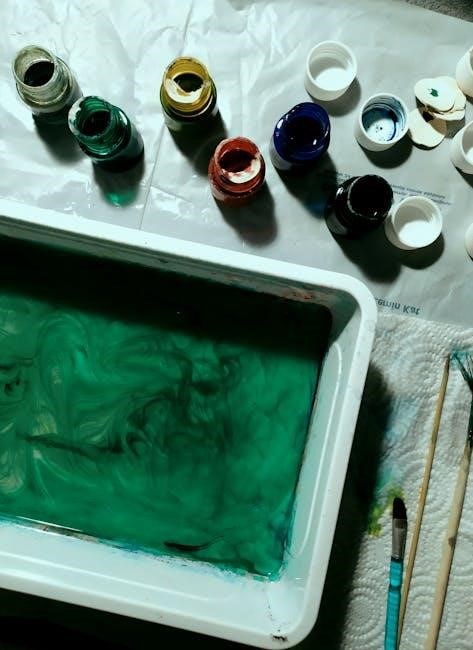
When handling BioAdvanced Brush Killer, wear protective gear including gloves, safety goggles, and a long-sleeved shirt. Avoid skin contact and inhalation of fumes. Keep product away from children and pets to ensure safe application and storage.
Handling the Concentrate
Handling the BioAdvanced Brush Killer concentrate requires care to ensure safety and effectiveness. Always wear protective gear, including gloves, safety goggles, and a long-sleeved shirt, to prevent skin contact and eye irritation. Avoid inhaling the product’s fumes, as they may cause respiratory discomfort. Keep the concentrate out of reach of children and pets to prevent accidental exposure. When opening the container, do so in a well-ventilated area, and use a clean, dry scoop or measuring cup to transfer the concentrate to the mixing container. Never use personal utensils or containers for measuring, as this can lead to contamination. Store the concentrate in its original container, tightly sealed, and in a cool, dry place away from heat sources and open flames. Proper handling ensures safe application and maintains the product’s potency.
Protective Gear Recommendations
When handling BioAdvanced Brush Killer, it is crucial to wear appropriate protective gear to minimize exposure risks. This includes long-sleeved shirts, long pants, and closed-toe shoes to cover skin. Gloves made of waterproof materials, such as rubber or neoprene, should be worn to prevent skin contact. Protective eyewear, like goggles or safety glasses, is essential to shield eyes from splashes. Avoid wearing loose clothing that could trap droplets. If spraying overhead or in dense vegetation, consider using a face mask to reduce inhalation of fine particles. These precautions ensure safe handling and application of the concentrate, preventing potential skin irritation or other adverse effects. Always follow label guidelines for personal protective equipment (PPE) to maintain safety and effectiveness during use.
Disposal and Storage Guidelines
Proper disposal and storage of BioAdvanced Brush Killer are essential to ensure safety and environmental protection. Dispose of unused or leftover concentrate and diluted solutions according to local regulations. Do not drain the mixture into sewers, storm drains, or waterways, as it can harm aquatic life. Empty containers should be rinsed thoroughly and recycled or disposed of in a landfill. Store the product in its original container, tightly sealed, and out of reach of children, pets, and pests. Keep it in a cool, dry, well-ventilated area away from food, feed, and other chemicals. Avoid storing it in direct sunlight or extreme temperatures. Never reuse the container for other purposes. Always follow the product label for specific disposal instructions, and consult local authorities if unsure. Proper storage and disposal help prevent accidents and protect the environment.
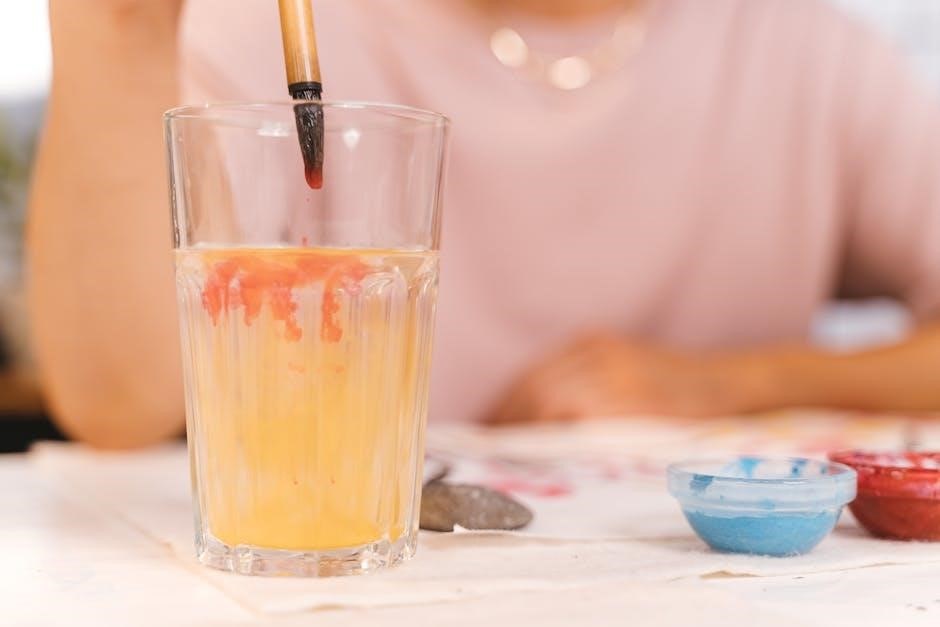
Best Practices for Effectiveness
For optimal results, mix BioAdvanced Brush Killer accurately and apply during spring, summer, or fall. Ensure thorough coverage and consider using surfactants to enhance penetration and effectiveness.
Timing of Application
The optimal time to apply BioAdvanced Brush Killer is during the growing season when target plants are actively growing. Spring, summer, and fall are ideal, as the herbicide works best on foliage. Apply when plants are healthy and leaves are fully expanded to ensure maximum absorption. Avoid application during dormancy or stress, as effectiveness may be reduced. Timing varies by species, so consult the label for specific guidance. For stumps, apply immediately after cutting to prevent resprouting. Weather conditions, such as rain or extreme heat, can affect results, so apply on a calm, dry day. Proper timing enhances penetration and ensures long-lasting control of brush and vines; Always follow label instructions for seasonal application rates to achieve desired outcomes.
Weather Conditions for Optimal Results
Weather plays a crucial role in the effectiveness of BioAdvanced Brush Killer. Apply the herbicide on a calm, dry day with no rain forecasted for at least 24 hours. This ensures the solution adheres to foliage without being washed away. Avoid spraying during high winds to prevent overspray onto desirable plants. Optimal results occur when temperatures are between 40°F and 90°F, as extreme heat can reduce herbicide efficacy. Do not apply if rain is expected within 24 hours, as this can dilute the solution and reduce absorption. For best penetration, spray when plants are dry and free of dew or moisture. Weather conditions should be stable to allow the herbicide to dry on the leaves and stems, ensuring proper uptake and effectiveness. Always check the weather forecast before application to maximize results and minimize environmental impact.
Using Surfactants for Better Penetration
Surfactants enhance the effectiveness of BioAdvanced Brush Killer by reducing water’s surface tension, allowing the herbicide to spread evenly and penetrate plant tissues more efficiently. Use a nonionic surfactant at 0.25% to 0.5% of the total spray volume. Add the surfactant after mixing the herbicide with water to ensure even distribution. This improves absorption, especially on waxy or hairy-leaved plants. Avoid using excessive amounts to prevent potential harm. Choose surfactants compatible with the herbicide and suitable for your target plants. Apply in dry conditions to maximize effectiveness. Surfactants are particularly beneficial when dealing with challenging vegetation, ensuring better uptake and results. Always follow label instructions for optimal use and safety.
Troubleshooting Common Issues
Common issues with BioAdvanced Brush Killer include poor effectiveness, overspray, and improper mixing. Adjust application rates, use correct dilution ratios, and ensure thorough coverage to resolve these problems effectively.
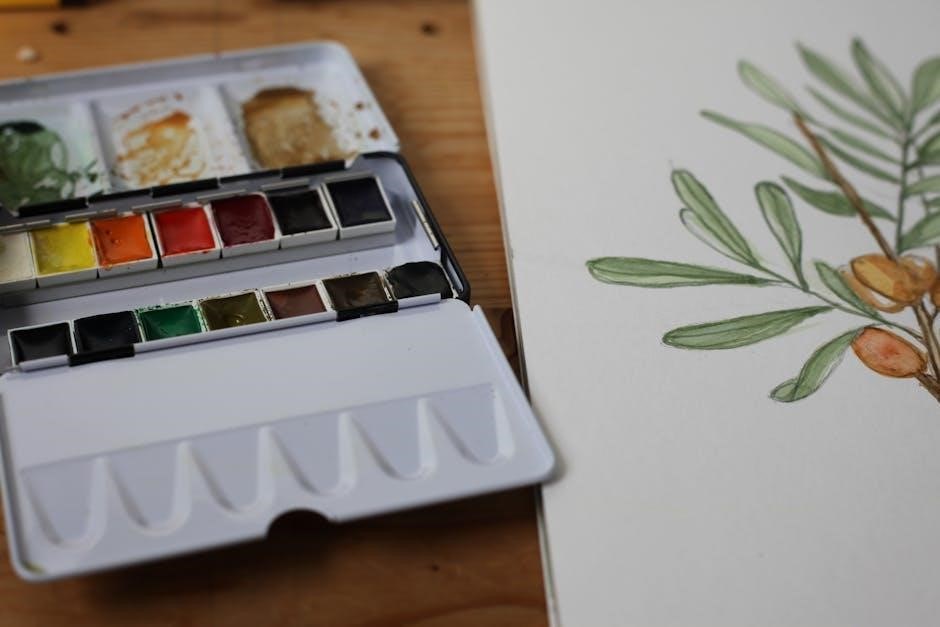
Common Mixing Mistakes
One of the most frequent errors when using BioAdvanced Brush Killer is incorrect dilution. Over-diluting the concentrate reduces its effectiveness, while under-diluting can harm plants or soil. Users often overlook the recommended 4 fl. oz. per gallon of water ratio, which is crucial for optimal results. Another mistake is not calibrating the sprayer properly, leading to uneven application. Additionally, some individuals forget to add surfactants, which enhance herbicide penetration, especially for hard-to-kill species like kudzu. Neglecting to follow the label’s maximum application rate of 9 lb ae/A per year can result in environmental damage. It’s also important to avoid mixing more solution than needed, as leftover concentrate should not be stored. Always double-check the mixture before application to ensure accuracy and safety.
Addressing Poor Effectiveness
If BioAdvanced Brush Killer isn’t providing the desired results, several factors could be at play. First, ensure the mixture ratio is accurate, as deviations can significantly impact performance. Applying the product during unfavorable weather conditions, such as rain or extreme heat, can reduce its effectiveness. Timing is also crucial; apply when target plants are actively growing for best results. Additionally, using a surfactant can improve penetration, especially for hard-to-kill species like kudzu. If the brush is particularly dense, increasing the concentration slightly (within label guidelines) may be necessary. Lastly, poor effectiveness could indicate resistance or improper application technique. Reapplication may be required after several weeks, but always adhere to the maximum annual application rate to avoid environmental harm. Consulting the product label or seeking professional advice can help resolve persistent issues.
Dealing with Overspray
Overspray can accidentally damage desirable plants or surfaces, so it’s crucial to address it promptly. If overspray occurs, rinse affected areas with water immediately to minimize harm. For plants, thorough watering may help mitigate damage, but effectiveness depends on the quantity and concentration of the herbicide. To prevent overspray, adjust the sprayer nozzle to a coarse setting and maintain a distance of 12 inches from the target. Avoid spraying in windy conditions, as this can carry the solution to unintended areas. If overspray occurs on non-target vegetation, monitor for signs of stress and consider providing optimal growing conditions to aid recovery. Always follow label instructions for application to reduce the risk of overspray and ensure safe, effective use of BioAdvanced Brush Killer.
Following BioAdvanced Brush Killer’s mixing instructions ensures effective brush control and safety. Proper dilution and application maximize results while protecting the environment and desirable plants from harm.
Final Tips for Successful Application
For optimal results with BioAdvanced Brush Killer, ensure thorough coverage of target plants without over-saturating. Apply during calm weather to prevent drift and protect nearby vegetation. Avoid spraying in extreme temperatures or during rainfall to maintain efficacy. For particularly stubborn growth, consider adding a surfactant to enhance penetration. Always follow the recommended mixing ratios and application rates specified on the label to achieve the best outcomes. Regularly inspect treated areas to monitor progress and reapply as needed, adhering to the maximum annual application rate. Proper timing and adherence to guidelines will help achieve long-lasting control of unwanted brush and vines, ensuring a safer and more manageable outdoor space.
Importance of Following Label Instructions
Adhering to the label instructions for BioAdvanced Brush Killer is crucial for both effectiveness and safety. Proper mixing ensures the product performs as intended, targeting brush and weeds without unnecessary waste. Deviating from recommended ratios can lead to reduced efficacy or potential environmental harm. Following guidelines helps avoid over-application, which can damage desirable plants or contaminate soil and water. Additionally, label instructions are designed to protect users from exposure risks, emphasizing the importance of wearing protective gear. By strictly following the mixing and application directions, users can achieve optimal results while minimizing potential hazards. This ensures the product remains a reliable and efficient solution for managing tough brush and invasive growth. Always prioritize label compliance to maximize safety and effectiveness in every application.




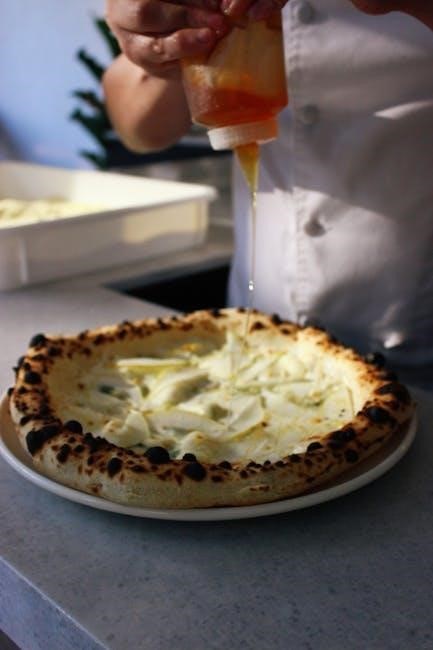







Leave a Comment